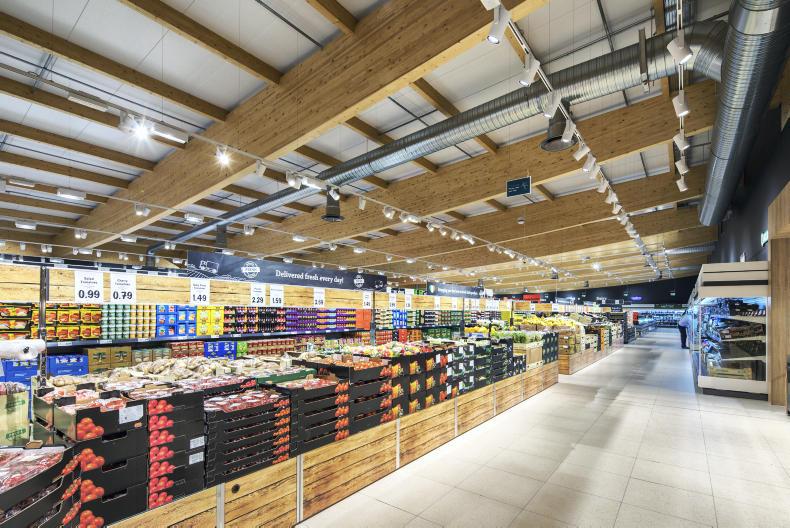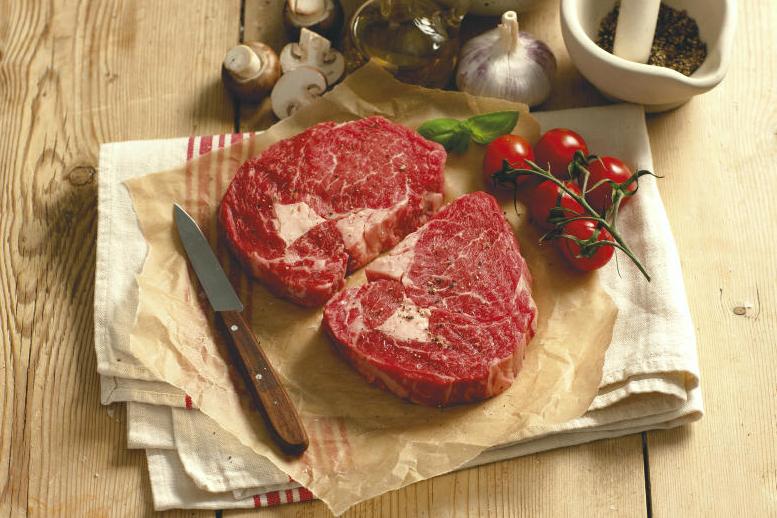When Lidl arrived in Ireland with its unfamiliar brands and unusual food range 17 years ago, shopping at the German discounter was a bit of a shameful secret.
It was seen as somewhat downmarket, for those with lower incomes on a tight budget and, as the Celtic Tiger roared, shoppers flocked to the traditional supermarkets wooed by their upmarket offerings and prices to match.
But that was set to change.
When the recession came in 2008, people realised that the traditional supermarkets were milking it and that there was much better value in the aisles of the discounters. This set off turning the grocery sector upside down.
Mercedes and BMWs are a common sight in the car parks at Lidl these days as the discount supermarket brand has flipped the perception of cheap products to focus on providing good-quality products at reasonable prices.
And there is a change happening inside its stores as well.
While Lidl has stayed true to its discount model, its store formats are starting to evolve. In what it calls ‘‘concept stores’’, Lidl is now placing a greater emphasis on fresh products, moving the fruit and vegetable closer to the entrance and introducing in-store bakeries along with an improved fresh meats presentation.
These are all key points of differentiation, says John Paul Scally, the 35-year-old son of a Westmeath dairy farmer and managing director of Lidl Ireland.
An industrial engineer, Scally joined the company in 2003 and spent time working in various functions in Ireland and France.
Through a combination of fierce discounting and a highly efficient operating model, Lidl has left the big supermarkets reeling. While the market leaders have been focusing on cutting costs and lowering prices to play catch-up, the secret of Lidl’s success, according to Scally, is simple: “We have been improving quality, building up from a low-cost base.”
Building loyalty
Being cheaper than the competition is not enough to build customer loyalty and ensure longevity. In order to change perceptions of Lidl among the public, the brand had to change the public’s underlying belief of “what value is”. Instead of focusing on cutting costs and lowering prices, it has been improving quality, building up from a low-cost base.
By successfully finding the balance between quality and cost, Lidl has grown consistently in the last 17 years and carved out a market share of more than 11%.
Scally says Lidl now appeals to all and is relevant to all. There is no such thing as a Lidl customer. This perhaps is shown by its latest marketing campaign called Lidl Trolley Cam, where real shoppers are recorded as they do their weekly shop. It emphasises the point that in the post-recession era, shopping in Lidl has become a badge of honour rather than a source of middle-class shame.

The challenge now is to continue the growth and win over even more customers. He has ambitious plans to add a further 50 stores to its current 150 at the rate of four to five each year.
He says to do this the supermarket needs to deliver much more than price. This has been one of the big reasons it is ramping up its focus on quality and in-store experience with wider aisles, improved displays and increased fresh produce.
In identifying where it will open its next store, Lidl looks at a minimum population requirement to select the town. It then looks for an easy-access site with space for parking. Scally says the company does not worry about whether the town is already serviced by some of the traditional retailers, as Lidl is confident in its business model.
The Lidl model
“We like to think of ourselves as the Ryanair of grocery,” says Scally (pictured above), as he walks me around the new headquarters in Tallaght. “We are a discount retailer that cuts out the frills and focus on every part of the supply chain to drive efficiency to give customers the best value.”
Compared with the traditional retailers, which can carry up to 15,000 products, Lidl carries as few as 1,700 items in its stores. This means higher stock turnovers, less waste and fresher produce for shoppers.
With all suppliers shipping to its distribution centres, and daily orders coming from each store, Lidl operates a just-in-time operating model that keeps store warehouses small and reduces the stock carried by the entire organisation.
There is even a no-frills approach to displaying product. There is no unpacking of boxes at Lidl.
The product arrives on the shelves in its original delivery cartons and the customer takes the product directly from the carton, thus doing the unpacking. Staffing is minimal, so that a profit can still be made even though the prices are low.
And this is the Lidl model through 10,000 stores in 27 countries. Every part of the process is precisely designed to deliver the highest-quality products at the lowest possible price and the most efficient shopping experience possible, according to Scally. He says that, at first, Lidl just copied and pasted its business model abroad, but nowadays it adjusts the model to the country and the local cultures. In February, Lidl announced that it was expanding into the US with plans for up to 100 stores on the country’s east coast. This will be its first move across the Atlantic, which has seen many rivals fail and retreat.

When it comes to differentiation, all signs point to one area in the supermarket: fresh food.
Scally says Lidl is seeing a rise in fresh food sales in the last number of years. He says it is focusing on offering fresher, locally sourced and even organic produce. He says it also builds a full supply chain that ensures speed of fresh food from farms to store in record time.
But fresh produce is generally lower margin. He says that because there are fewer products in store, it keeps costs lower. Scally says that when Lidl first opened, it was 30% cheaper than the rest of the market and that the perception was that if it was cheap it couldn’t be good.
He claims that, today, the trust in the quality has built up and the company only buys the best of Irish. He says that with so few product lines, it means “our buyers have to be better”.
For example, instead of carrying five or six brands of jam, Lidl carries one. “Our buyer needs to select a jam that has mass appeal, high-quality ingredients and tastes great. This goes for any product Lidl carries”.
Own-label products
Own-brand supermarket products are proving increasingly popular with shoppers.
Scally says that own-label products now make up almost 70% of the Irish grocery market (by volume). Up to 90% of Lidl’s offering is own-label, which allows it to be more competitive.
He says the own-label route especially benefits smaller food producers as it opens up a larger sales market in volume terms. In many cases, he says that the quality of an own-brand can actually be higher as the manufacturer wants to ensure it succeeds.
Lidl’s success does not mean it has been easy. The discounters themselves have created increased price pressures in an already-thin margin business.
Today’s shoppers are not loyal to any single supermarket. One of the toughest challenges Scally faces is converting casual shoppers into loyal customers. While the low prices have helped make it the leader in customer advocacy, customers are demanding more in quality and service. His challenge is to create a differentiated proposition – beyond price – that will truly earn them customer loyalty.
Doubling Irish food exports
Lidl has over 200 Irish food suppliers. In 2015, it bought €539m worth of Irish food produce. It exported €153m in 2015, around 1.4% of Irish food and beverage exports. This continues to increase, with a target to double food exports to €300m by 2019.
In 2012, Lidl launched its premium Irish Hereford range of steaks and mince after the Irish Hereford Breeders Society got together with Lidl, Slaney Foods and Liffey Meats.
It quickly became Ireland’s fastest-growing meat brand. Along the way, the range was expanded to include products such as burgers and diced beef. Such was the demand for the product, which is aged for 14 days on the bone and a further 14 days for extra maturity, that it caught the attention of Lidl Europe. The project started slaughtering 20 animals per week and is now slaughtering 400 per week.

Scally believes there is a huge opportunity for Irish beef exports as more and more consumers will be overseas. He says in the context of Brexit this is very important. Lidl exported €21m worth of beef to 12 countries around Europe including the UK, Spain, Finland, Denmark, Czech Republic and Germany.
Slaney Foods pays its Hereford farmers a 15c/kg bonus for all carcases grading from O- upwards, and for up to fat score 4 plus. The Slaney Foods bonus is available to Hereford bullocks and heifers up to 36 months old, provided they are not a 2 or a 5 in fat, or a P in conformation. To qualify, animals must be between 250kg and 400kg dead weight and quality assured.
Online
“I am not in any rush to enter online retail. There is still huge potential in traditional formats and to continue to improve the in-store experience.”
Changing consumer
“We are seeing an increase in the frequency of visits to our stores which is against the European trend. Irish people are conscious of food waste, are shopping more often, which is driving fresh consumption.”
Customer loyalty
“Loyalty is built through products, quality, service and value – not by loyalty cards.”
Supply partners
“We build long-term relationships with our suppliers. We don’t have ‘hello money’ and we are transparent and ethical in our buying.”
Agribusiness Report 2017: a new Glanbia taking shape
Full coverage: Agribusiness Report 2017
Listen: sustainability top of agenda at Agribusiness event
Agribusiness report 2017: the cutting edge of change in New Zealand














SHARING OPTIONS